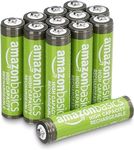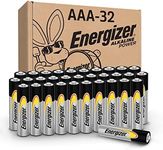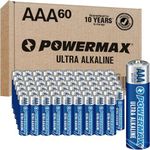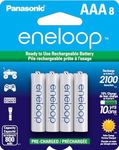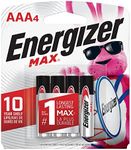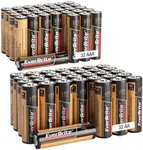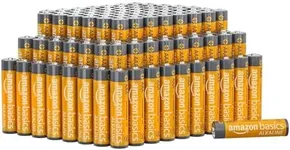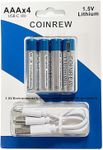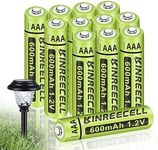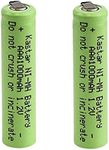Buying Guide for the Best Longest Lasting Aaa Batteries
When it comes to picking the longest-lasting AAA batteries, it's important to understand the key specifications that determine battery performance and longevity. By focusing on these specs, you can make an informed decision that best suits your needs. Whether you're powering a remote control, a flashlight, or a high-drain device like a digital camera, knowing what to look for will help you choose the right batteries for the job.Battery ChemistryBattery chemistry refers to the materials and chemical reactions used to store and release energy. The most common types of AAA batteries are Alkaline, Lithium, and NiMH (Nickel-Metal Hydride). Alkaline batteries are widely available and offer good performance for low to moderate drain devices. Lithium batteries are more expensive but provide longer life and better performance in high-drain devices and extreme temperatures. NiMH batteries are rechargeable and ideal for devices that are used frequently. Choose Alkaline for everyday use, Lithium for high-drain or extreme conditions, and NiMH if you prefer rechargeable options.
Capacity (mAh)Capacity, measured in milliampere-hours (mAh), indicates how much energy a battery can store. Higher capacity means the battery can power a device for a longer period. For AAA batteries, capacities typically range from 500 mAh to 1200 mAh. If you need batteries for high-drain devices like digital cameras or gaming controllers, opt for higher capacity batteries. For low-drain devices like remote controls or clocks, lower capacity batteries will suffice.
Shelf LifeShelf life refers to how long a battery can be stored before it starts to lose its charge. This is important if you plan to buy batteries in bulk or use them infrequently. Alkaline batteries generally have a shelf life of 5-10 years, while Lithium batteries can last up to 20 years. NiMH batteries have a shorter shelf life but can be recharged many times. If you need batteries that will be stored for long periods, choose those with a longer shelf life.
Operating Temperature RangeThe operating temperature range indicates the temperatures at which a battery can function effectively. This is crucial if you plan to use the batteries in extreme conditions. Alkaline batteries perform well in moderate temperatures but may struggle in very cold or hot environments. Lithium batteries excel in a wide range of temperatures, making them suitable for outdoor use in extreme weather. NiMH batteries also perform well in various temperatures but may have reduced performance in very cold conditions. Choose batteries based on the typical environment where they will be used.
RechargeabilityRechargeability refers to whether a battery can be recharged after it has been depleted. Alkaline and Lithium batteries are typically single-use, while NiMH batteries are rechargeable. Rechargeable batteries are more cost-effective and environmentally friendly in the long run, especially for devices that are used frequently. If you prefer the convenience of single-use batteries, choose Alkaline or Lithium. If you want to reduce waste and save money over time, opt for NiMH rechargeable batteries.

